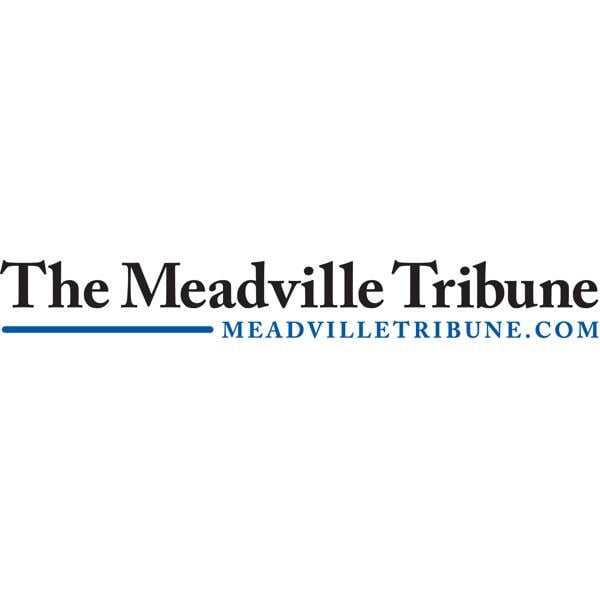House Dems hear from rural school admins about challenges to public education
House Dems hear from rural school admins about challenges to ... Meadville Tribune


House Democratic Policy Committee Holds Public Hearing on Rural Schools

Introduction
The Pennsylvania House of Representatives’ highest ranking Democrats visited Centre County on Wednesday to conduct a public hearing on rural schools. This hearing is part of a series of hearings held across the state to address issues adversely impacting student outcomes, such as transportation, poverty, and teacher shortages.
Similar Challenges in Rural Communities
House Speaker Joanna McClinton, representing parts of Philadelphia and Delaware counties, highlighted the similarities between challenges faced by rural communities and those faced by suburban and urban districts. These challenges include housing insecurity, homelessness, mental health issues, learning loss, and teacher shortages. McClinton emphasized the need for fair funding of public schools to improve student outcomes and create better communities.
Rural Students in Pennsylvania
Karen Eppley, associate teaching professor of education at Penn State and a Bald Eagle Area graduate, pointed out that Pennsylvania has one of the highest populations of rural students in the country. Rural districts face high costs for transportation and special education. Eppley advocated for cyber/charter school reform and called for support for House Bill 1422, which aims to institute a flat tuition rate for these schools and save brick-and-mortar districts an estimated $456 million annually.
Increased Funding for Career and Technical Education
Jacquelyn Martin, superintendent of Keystone Central School District, lobbied for increased funding for career and technical education. She also highlighted the need to streamline regulations that hinder related programming and student apprenticeships.
Immediate Change Needed
Jim Orichosky, director of elementary education at Bald Eagle Area, emphasized the need for immediate change in providing free breakfast and lunch to all students, instituting universal preschool, and addressing the workforce shortage. He shared that the district has been struggling to fill a secondary math position for three months, with only one applicant showing interest. Additionally, there are limited preschool programs available within Bald Eagle Area.
Challenges Faced by Forest Area School District
Forest Area School District, located in northwestern Pennsylvania, faces challenges due to its large geographic area and high rates of housing instability, poverty, and special education needs among students. Superintendent Amanda Hetrick expressed concerns about the loss of tenured teachers in critical subjects like math, science, and foreign language.
Efforts to Improve Teacher Recruitment
Pennsylvania’s state budget includes initiatives to improve teacher recruitment, such as $10 million for stipends to student teachers and a $2,500 tax credit for new teachers, nurses, and police officers. There is also a grant program called Grow-Your-Own-Educators, which incentivizes relationships between schools and higher education entities. The budget also allocates funds for free breakfast, special education, and basic education subsidies.
Addressing Labor Shortage
Rep. Jordan Harris of Philadelphia, chair of the House Appropriations Committee, acknowledged that rural, suburban, and urban districts are all facing a labor shortage. He highlighted the importance of initiatives like stipends to recruit teachers and called for efforts to remove barriers and streamline processes for professionals pursuing a career in public education.
SDGs, Targets, and Indicators in the Article
-
SDG 4: Quality Education
- Target 4.1: By 2030, ensure that all girls and boys complete free, equitable, and quality primary and secondary education.
- Target 4.4: By 2030, substantially increase the number of youth and adults who have relevant skills, including technical and vocational skills, for employment, decent jobs, and entrepreneurship.
- Target 4.c: By 2030, substantially increase the supply of qualified teachers, including through international cooperation for teacher training in developing countries.
The article discusses issues related to student outcomes, teacher shortages, and career and technical education. These align with SDG 4’s focus on quality education and its targets to ensure access to education, develop relevant skills, and increase the supply of qualified teachers.
-
SDG 1: No Poverty
- Target 1.2: By 2030, reduce at least by half the proportion of men, women, and children of all ages living in poverty in all its dimensions according to national definitions.
The article mentions issues of poverty and housing insecurity faced by students. These align with SDG 1’s target to reduce poverty in all its dimensions.
-
SDG 2: Zero Hunger
- Target 2.1: By 2030, end hunger and ensure access by all people, in particular the poor and people in vulnerable situations, including infants, to safe, nutritious, and sufficient food all year round.
The article discusses the importance of providing free breakfast and lunch to all students and mentions a backpack program for weekend meals. These align with SDG 2’s target to end hunger and ensure access to nutritious food.
-
SDG 8: Decent Work and Economic Growth
- Target 8.5: By 2030, achieve full and productive employment and decent work for all women and men, including for young people and persons with disabilities, and equal pay for work of equal value.
The article highlights the workforce shortage and the need to improve the pipeline of new teachers. These align with SDG 8’s target to achieve full and productive employment and decent work.
-
SDG 11: Sustainable Cities and Communities
- Target 11.3: By 2030, enhance inclusive and sustainable urbanization and capacity for participatory, integrated, and sustainable human settlement planning and management in all countries.
The article mentions challenges faced by rural communities, including housing instability and the risk of disappearing infrastructure. While not directly related to urbanization, these issues highlight the need for sustainable development in rural areas as well.
Table: SDGs, Targets, and Indicators
| SDGs | Targets | Indicators |
|---|---|---|
| SDG 4: Quality Education | Target 4.1: By 2030, ensure that all girls and boys complete free, equitable, and quality primary and secondary education. | Student outcomes, access to education |
| SDG 4: Quality Education | Target 4.4: By 2030, substantially increase the number of youth and adults who have relevant skills, including technical and vocational skills, for employment, decent jobs, and entrepreneurship. | Career and technical education, relevant skills |
| Target 4.c: By 2030, substantially increase the supply of qualified teachers, including through international cooperation for teacher training in developing countries. | Teacher shortages, qualified teachers | |
| SDG 1: No Poverty | Target 1.2: By 2030, reduce at least by half the proportion of men, women, and children of all ages living in poverty in all its dimensions according to national definitions. | Poverty, housing insecurity |
| SDG 2: Zero Hunger | Target 2.1: By 2030, end hunger and ensure access by all people, in particular the poor and people in vulnerable situations, including infants, to safe, nutritious, and sufficient food all year round. | Free breakfast and lunch programs, access to nutritious food |
| SDG 8: Decent Work and Economic Growth | Target 8.5: By 2030, achieve full and productive employment and decent work for all women and men, including for young people and persons with disabilities, and equal pay for work of equal value. | Workforce shortage, pipeline of new teachers |
| SDG 11: Sustainable Cities and Communities | Target 11.3: By 2030, enhance inclusive and sustainable urbanization and capacity for participatory, integrated, and sustainable human settlement planning and management in all countries. | Rural communities, housing instability |
Behold! This splendid article springs forth from the wellspring of knowledge, shaped by a wondrous proprietary AI technology that delved into a vast ocean of data, illuminating the path towards the Sustainable Development Goals. Remember that all rights are reserved by SDG Investors LLC, empowering us to champion progress together.
Source: meadvilletribune.com

Join us, as fellow seekers of change, on a transformative journey at https://sdgtalks.ai/welcome, where you can become a member and actively contribute to shaping a brighter future.







